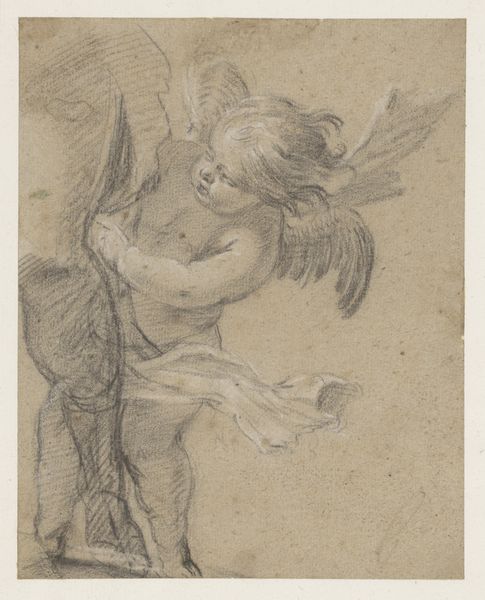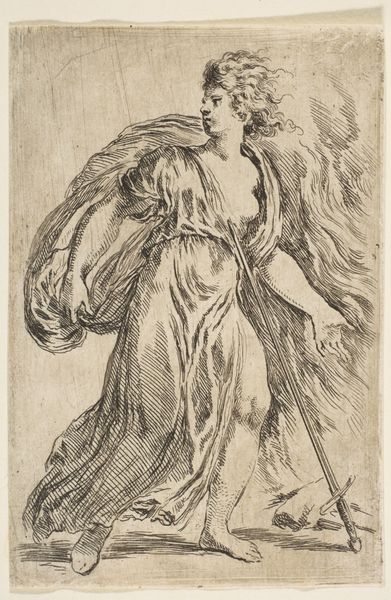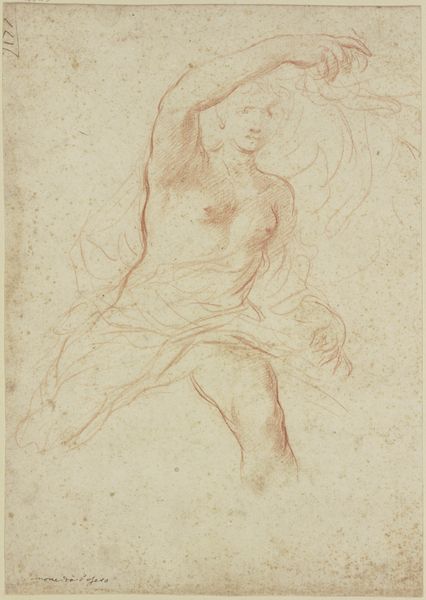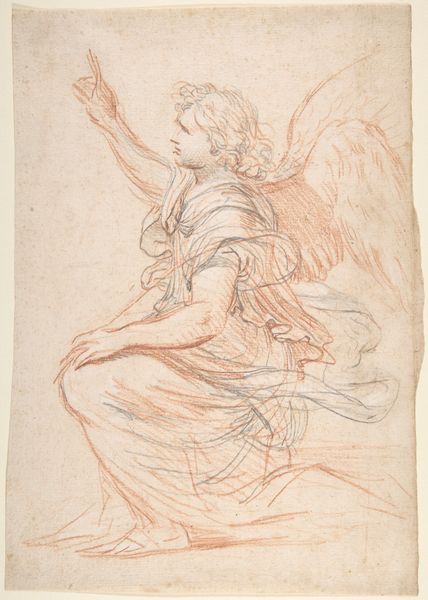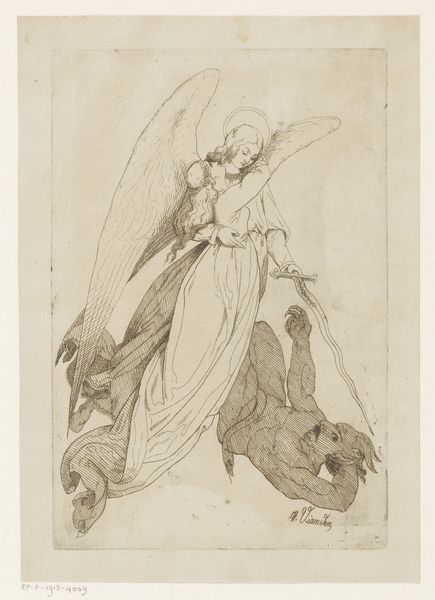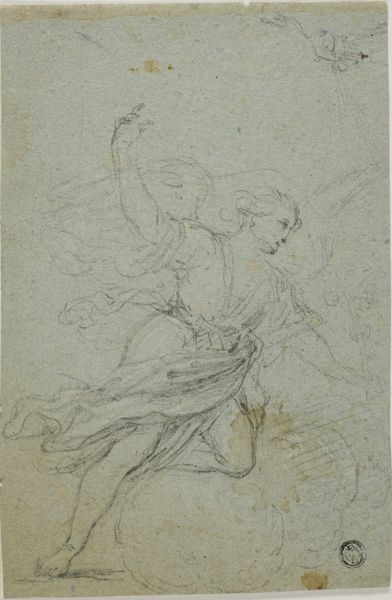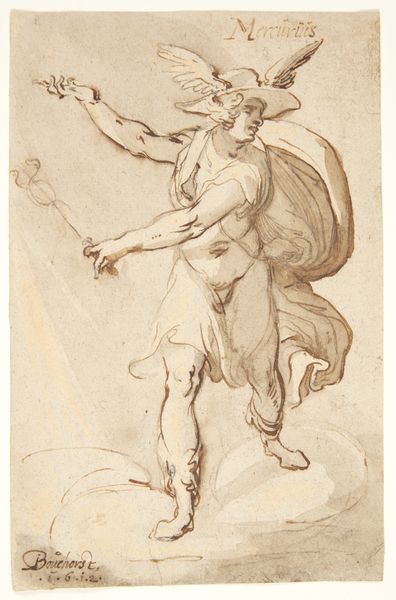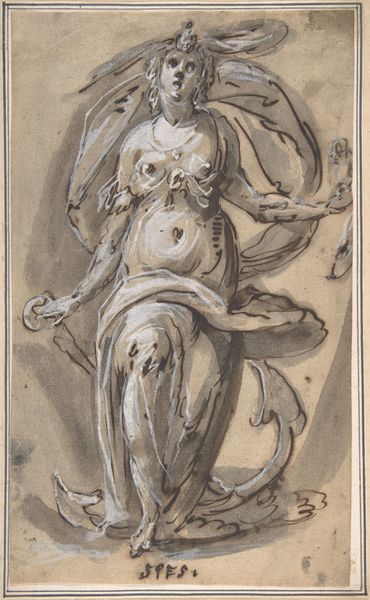
drawing, print, pencil
#
drawing
# print
#
pencil sketch
#
mannerism
#
figuration
#
coloured pencil
#
pencil
#
line
#
watercolour illustration
#
history-painting
#
sword
#
angel
Dimensions: 10 11/16 x 6 15/16in. (27.2 x 17.6cm)
Copyright: Public Domain
Curator: This delicate work, titled "Standing Angel Brandishing a Sword," comes to us from Ferraù Fenzoni, made sometime between 1585 and 1595. It's a compelling drawing in pencil, showcasing a winged figure poised with a weapon. What’s your first impression? Editor: It feels like a preparatory sketch, a flurry of lines capturing movement. The focus seems to be on the folds of the drapery, the weight of the fabric itself, more so than a polished, finalized form. Curator: Absolutely, you can almost feel Fenzoni experimenting with the composition. I’m struck by the recurring motif of the angel wielding a sword. In Renaissance art, angels were often symbols of divine justice and protection. Consider Saint Michael. Editor: I’m interested in the artist’s decision to use pencil. It creates a softness, a certain approachability. It doesn't have the permanence of ink or the gravitas of paint. Is it simply an economical choice, or is the relative ease of working with this medium informing the image-making process? Curator: The immediacy of the medium definitely contributes to its character, its unfinished and evolving qualities. However, consider the socio-political context of late 16th-century Italy: Fenzoni, an Italian painter during the late Renaissance, might also have aimed to communicate faith through this image. Editor: So the act of rendering the divine, of choosing specific, earthly materials… what does that say about our engagement with the spiritual world? The accessibility of the medium democratizes the image, bringing the angel, and by extension, the concept of divine protection, closer to the individual. Curator: I see what you mean. And consider how Mannerism— a core ingredient of this work, after all—revels in elaborate forms and elongated figures. Does that inform your thoughts? Editor: Precisely. Mannerism favored artifice, so a medium like pencil seems fitting. It acknowledges the work involved, foregrounding human agency rather than attempting to disguise the labor and processes involved in creation. Curator: Looking closely at it one last time, I feel how, through these deliberate decisions, this angel and the sword become symbols, not just of protection but of hope, maybe even a promise of redemption in a turbulent time. Editor: Yes, it moves beyond mere iconography; Fenzoni's artistic decisions— pencil work and all—emphasize a message accessible to all. The choice isn't arbitrary but essential to the impact the image makes and to the stories it aims to tell.
Comments
No comments
Be the first to comment and join the conversation on the ultimate creative platform.

